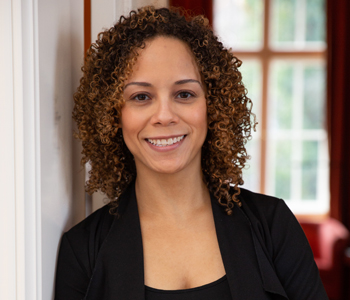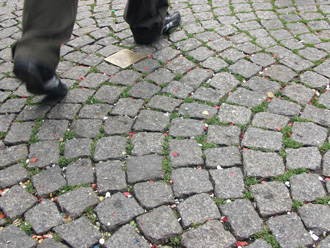
This is a book about hope. It’s about the resilient and adaptable human capacity to imagine a superlative future, even when official discourses insisted on its impossibility. It’s about who conceived these radical alternatives and how they tried to realize them.
Although one could tell a version of this history for many places around the world, a coincidence of conditions in the late twentieth century made West Germany fertile ground for imagining new utopian possibilities. By the late 1970s, West Germany faced an uninspiring set of circumstances. The country was shaken by oil crises that ended the economic miracle that rebuilt Germany after World War II. It was unsettled by a wave of domestic terrorism. New science warned of imminent threats to the environment. Cold War military strategy continued to leave people on edge. And many West Germans felt that domestic politics had stagnated. These circumstances didn’t seem conducive to innovation.
And yet this was the same moment when groups of intellectuals, activists, artists, and ordinary people began to insist that society develop new and ambitious visions for the future. They were inspired by the incremental successes of the New Social Movements—the environmental movement, women’s movement, peace movement, and anti-nuclear movement, among others. They drew momentum from Germany’s new attempts to work through the legacies of its Nazi past. They rallied alongside the opponents of Chancellor Helmut Kohl’s conservative administration. But they wanted more.
The book follows three networks of activists who responded to this sense of political disenfranchisement, social alienation, and cultural impotence with radical proposals. The collection of mostly amateur historians that populated the Berlin History Workshop used historical methodology to overturn undemocratic hierarchies of knowledge. By giving ordinary Germans both tools and opportunities to narrate their own histories, these historians sought to broker more ethical power relations. At the same time, Germany’s newest political party, the Green Party, brought politics out of parliament and into residential communities. The Greens hoped to cultivate a truly democratic society by saturating everyday life with meaningful opportunities to practice democracy. Parallel to these initiatives, a loose collection of artists of public space set out to use their art to change the ways people thought and acted. Their artworks nudged viewers to understand themselves as bearing responsibility for current issues. Importantly, these activists didn’t just traffic in ideas. They also created infrastructures in which Germans could test out and adopt new behaviors. And they refused to understand their work as short-lived. Instead, they borrowed from the environmental movement’s concept of sustainability and insisted that any alternative to society must be enduring and adaptable.
The impact of these groups reveals that interest in radical alternatives to existing society had hardly evaporated. Instead, West Germans embraced qualitatively new kinds of utopian practices that pursued a radically democratic, socially integrated, socially conscious, just, and peaceful Germany. They also attempted to enact that vision via the practices of everyday life. In doing so, they reclaimed utopian hope from the dustbin of historical ideas.
In some ways, a history of late twentieth-century utopianism fits neatly into histories of the twentieth century. Many scholars have emphasized that efforts to realize sweeping revisions to the structure and function of society became a twentieth-century priority. In other ways, though, a history of late twentieth-century utopianism seems incompatible with histories of the twentieth century, especially given that the century was as effective in destroying those projects as it was in initially conjuring them. The passions behind twentieth-century dreams could easily become pathological: the pursuit of mass sovereignty led to bellicose nationalism; mass production to human and ecological exploitation; and mass culture to the anaesthetization of its consumers.
Dreams became tragedies. Each failure narrowed the spectrum of viable possible futures. This trajectory had a measurable impact on the willingness of intellectuals to take utopian thought seriously. Most accounts written after the defeat of the century’s massive social engineering projects saw only two paths for utopianism: either naïve idealism or dangerous totalitarianism. The politically cataclysmic year of 1989 and the subsequent collapse of the Soviet Union appeared to confirm their skepticism. Academics and public intellectuals eagerly published on the inconceivability of utopian thinking. Writing after the fall of the Berlin Wall, the conservative German historian Joachim Fest declared a crisis of utopianism. American political scientist Francis Fukuyama argued that the global victory of liberal democracy had finally punctuated the long sentence of humanity’s political development. And British prime minister Margaret Thatcher similarly proclaimed that “there is no alternative” to Western liberal democracy and free market capitalism.
The wind behind my book’s sails originated out of this pessimism. I was struck by how little these discourses aligned with how ordinary people thought about the future. When confronted with circumstances that failed to fulfill their expectations, they have continued to believe in the possibility of overturning established institutions, thinking up superlative alternatives, and pursuing those alternatives.
But this wasn’t your grandma’s utopia. By the late twentieth century, many were willing to consider that a utopia could look different than the visions that had reigned since the nineteenth century. They reimagined utopia’s scale. Instead of seeking to change society as a whole like Europe’s totalizing social engineering projects, they pursued modest but concrete programs in finite segments of society. They also began to imagine utopia might have a different relationship to time. Instead of prescriptions for the future, these new utopians embraced the act of working toward. They believed a superlative future was realizable only through ongoing micro-attempts to approximate its normative agenda in the present. Finally, they insisted on new agency in utopian thought and practice. New utopias needed to emerge from ordinary people, not from the top down. In other words, these utopian revisionists helped to occasion nothing less than a sea change in the way the world thinks about and tries to realize radical ambitions for the future.
A key component of the book’s argument is that both efforts to reimagine the parameters of what “utopia” could mean and efforts to pursue those possibilities in practice could be found throughout German society in the late twentieth century. I defend this claim with a diverse collection of evidence: I talk about politics; I talk about art; I talk about intellectual life. The book is written to enable readers to excerpt these individual cases studies based on their interests. But when readers zoom in on specific examples, they risk missing the point that the transformations I describe in any individual section of the book had analogies across society. Changes in the way people conceived the scale, temporality, and agents of utopia were sweeping, not isolated phenomena.
Among the most accessible illustrations of my argument, though, is a peculiar Holocaust memorial initiative that cropped up in the early 1990s called the Stumbling Stones (Stolpersteine). I’m reluctant to describe the Stumbling Stones as a monument because the project features not a single commemorative site, but rather a network of tens of thousands of micro-sites scattered throughout Europe. Each mini-monument consists of a brass-covered cobblestone roughly three inches cubed, engraved with the name, date of birth, date of death, and place of death of a single victim of Nazi persecution. The text on each stone begins the same: “Here lived…,” and they lie flush with the sidewalk in front of the victim’s last freely chosen residence. They are called Stumbling Stones not because one actually stumbles over them but because one stumbles over a memory whose unanticipated discovery invites a moment of reflection and participation. Identifying victims by name, the stones cement the occurrence of each individual existence into the topography of everyday life. Since the project’s formal initiation in 1994, more than eighty thousand of these micro-memorials have been installed in twenty-six European countries.
The number of individual memorials alone, however, is not the Stumbling Stones’ most significant feature. Instead, I highlight the number and nature of participants in their creation. The project operates via a massive, decentralized, grassroots network. Behind each mini-monument are scores of ordinary people who have initiated, funded, researched, built, installed, and maintained it. The utopian ambition of the Stumbling Stones is both to envision and then to attempt to enact a future in which German citizens engage actively with Germany’s difficult past. The project serves not simply as an act of justice for the memory of the dead. It also operates, simultaneously, as an instrument in the battle against violence, antisemitism, racism, and xenophobia in the world today. The commemorative initiative becomes a very public stage upon which large, diverse, often international communities join together to critique the failures of contemporary society. That capacity won the Stumbling Stones attention internationally, generating a series of spin-offs in places as distant as Buenos Aires and Moscow. This global web of micro-commemoration demonstrates the allure of what some activists have described as a politics of small steps motivated by great visions.

This book was conceived at a moment of optimism, when the mantra “Yes, we can!” was emblazoned on bumper stickers and T-shirts and echoed across news headlines and radio stations around the United States. On January 8, 2008, then Senator Barack Obama warned us that “the battle ahead will be long. But always remember that no matter what obstacles stand in our way, nothing can stand in the way of the power of millions of voices calling for change.” And many of us believed him. To study hope in this context made sense.
But the book was born at a moment of despair, when police brutality toward Black and Brown bodies grew increasingly brazen but also when the mantra “Black Lives Matter” remained deeply controversial; when a devastating pandemic claimed millions of lives around the globe but the freedom not to wear a mask took precedence over protecting one’s neighbors; when climate change ravaged some of the planet’s most historic, stunning, and valuable landscapes and set up populations across the world for generations of immiseration; when reason and research were cast aside by charges of “fake news;” and when the outbreak of a major war on the European continent shattered any remaining illusions that a post-Cold War peace might be durable. For a good portion of this book’s development, hope seemed far away.
But that’s the thing about hope: any time its fire might be extinguished, someone always manages to secret away an ember. However small, it still burns, ever ready to be stoked into something brighter when we are ready to do the work of kindling.
This book offers evidence of that resilience. It gives us real examples drawn from our recent past of individuals and groups who responded to profound obstacles with profound creativity. It shows us the spectrum of real possibilities when ordinary people are willing to put that creativity in the service of realizing a better future. And it reminds us that failure is hardly the only possible outcome.


Jennifer Allen is an associate professor of modern European history at Yale. Her research and teaching focus on the history of modern Germany with an emphasis on cultural history, the theories and practices of memory, counterculture and grassroots activism, and environmentalism. She is currently working on a book that explores the ways anxieties about total destruction in the wake of the Second World War fueled dramatic attempts to archive and preserve the building blocks of society, ranging from its cultural products to its genetic material.